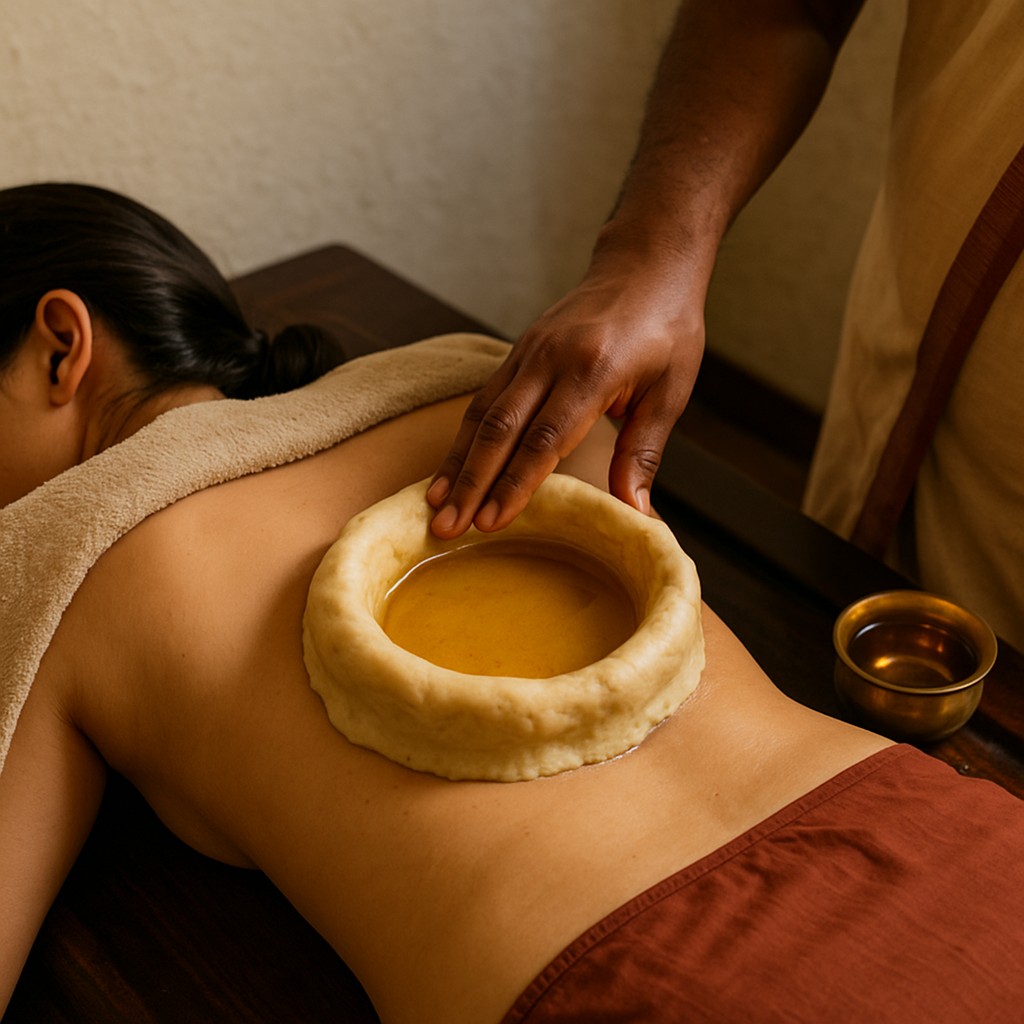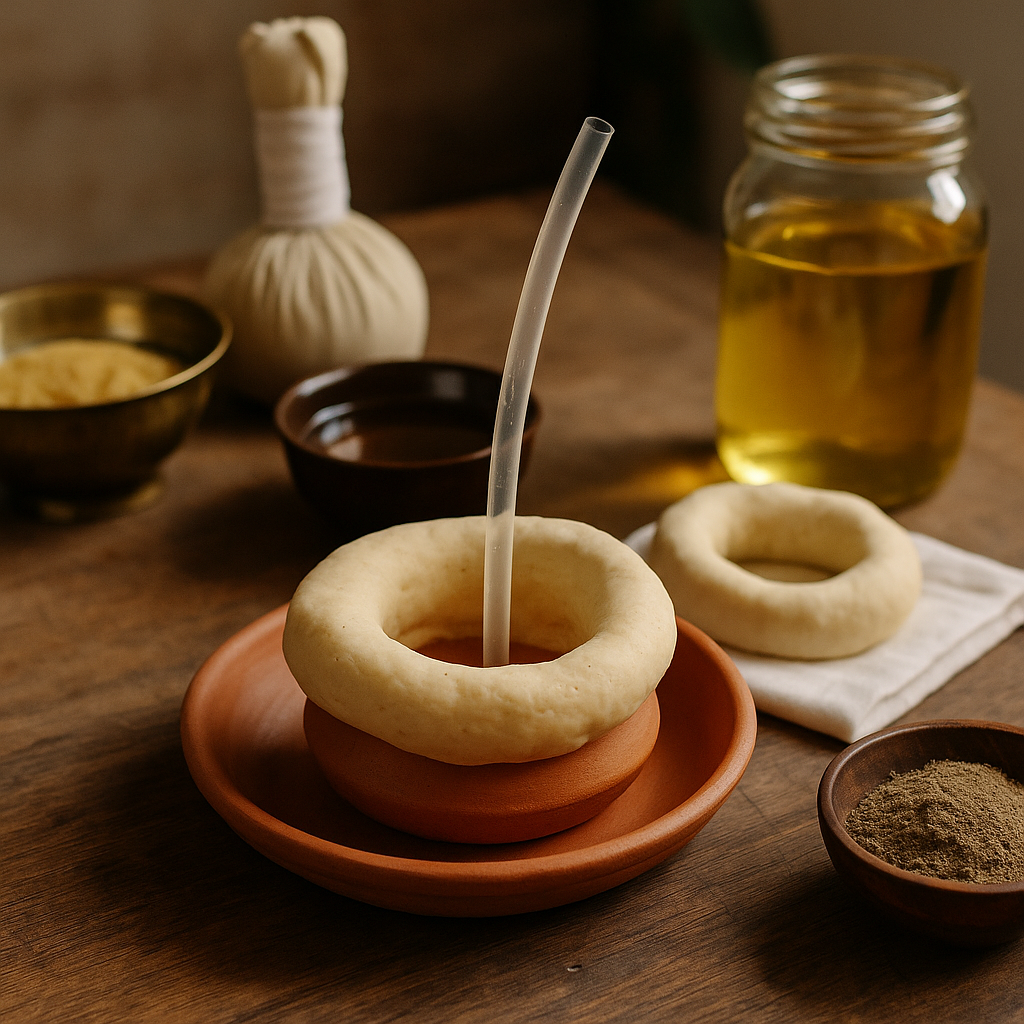Ask Ayurvedic doctor a question and get a consultation online on the problem of your concern in a free or paid mode. More than 2,000 experienced doctors work and wait for your questions on our site and help users to solve their health problems every day.
Shop Now in Our Store
What Is Basti in Ayurveda: Panchakarma Therapy and Its Benefits

When you first hear the term basti in Ayurveda, it might sound like something mysterious or even intimidating. But here’s the thing—it’s actually one of the most profound and healing therapies in traditional Ayurvedic medicine. Used for thousands of years, basti panchakarma has been called the “king of therapies,” and for good reason. This gentle yet powerful practice involves herbal enemas that cleanse the colon, balance the doshas (especially vata), and promote long-lasting wellness. But what is basti in Ayurveda exactly? How does it work, and why do so many people swear by it?
In this article, we'll take a deep dive into basti in Ayurveda—from what it is, to the different types of basti in Ayurveda, including kati basti and even yoga basti. We'll also cover how the treatment works, what to expect, its benefits, and yes, even the side effects. If you're curious about this ancient detox method or just exploring natural ways to heal your gut, you’re in the right place.
What Is Basti in Ayurveda and Its Role in Healing
Basti, in the context of Ayurveda, refers to a therapeutic procedure where medicated oils or herbal decoctions are administered into the rectum. Sounds a little weird? Maybe. But this method is deeply rooted in Ayurvedic philosophy and has been practiced for centuries as a part of panchakarma—Ayurveda's fivefold detox method.
Basti is primarily used to balance vata dosha, which governs movement in the body, including nerve impulses, digestion, and even our thoughts. When vata goes out of balance, symptoms like constipation, anxiety, insomnia, and joint issues can show up. That’s where basti therapy steps in.
By directly targeting the colon, basti ayurvedic treatment helps remove accumulated toxins (ama), strengthens digestion, lubricates dry tissues, and nourishes the body from the inside out. It’s not just a physical cleanse—people often report feeling lighter emotionally and mentally, too.

Basti in Panchakarma: Why It’s Called the “King of Therapies”
Among all the panchakarma therapies, basti holds a special place. Often referred to as the "king of treatments", it is considered the most effective way to eliminate vata-related disorders. While other therapies like vamana (emesis) or nasya (nasal cleanse) target specific organs, basti in panchakarma works more holistically.
Why? Because the colon is seen as the primary seat of vata. So when you treat the colon, you’re essentially resetting the entire system. Think of it as pressing the reboot button on your body’s operating system.
And it’s not just about detox. Basti ayurveda doesn’t strip the body—it restores it. It’s nurturing, nourishing, and grounding. People who have experienced it often say it's surprisingly soothing.
Types of Basti in Ayurveda
There isn't just one type of basti—there are several, each with its unique ingredients and benefits. Let’s break them down quickly.
Niruha Basti (Decoction-Based)
This type uses a combination of herbal decoctions, oils, honey, and rock salt. It’s typically water-based and more cleansing than nourishing. Niruha basti is particularly useful for eliminating toxins and managing vata-predominant conditions like dry skin, arthritis, or bloating.
Anuvasana Basti (Oil-Based)
Unlike niruha, anuvasana basti uses warm medicated oils and is more lubricating. It’s administered after meals and is especially helpful for people who are weak, dry, or dealing with nervous system issues. It doesn’t purge the system; instead, it supports and strengthens.
Other Specialized Forms (Kati Basti, Yoga Basti)
You’ve probably heard of kati basti treatment—where warm medicated oil is pooled over the lower back. It’s a localized therapy rather than an enema, but it still falls under the basti umbrella in some traditions.
Then there’s yoga basti, a more advanced form involving a specific sequence of oil and decoction bastis over eight days. Basti yoga is not about stretching on a mat—it’s a protocol aimed at deep, layered healing.

Kati Basti Treatment and Its Benefits
While the classical basti ayurvedic treatment is internal, kati basti stands out as a localized therapy with huge popularity—especially for people dealing with back pain or stiffness. You might’ve even come across images online where warm oil is held in place on the lower back with a dough ring. That’s kati basti!
This soothing treatment involves placing a dam-like structure made of black gram flour dough on the lower back (or kati region) and pouring warm, medicated oil inside it. The oil is left to sit for 20 to 40 minutes, seeping slowly into the muscles, nerves, and tissues. It’s kind of like a spa treatment meets physical therapy—but rooted in ancient Ayurvedic wisdom.
Conditions Treated with Kati Basti
-
Kati basti treatment* is especially beneficial for:
-
Chronic lower back pain
-
Sciatica
-
Lumbar spondylosis
-
Slipped discs
-
Muscle spasms
-
Stiffness or inflammation in the lower spine
It’s also used for athletes or people with sedentary desk jobs who feel that constant “tight back” tension. In some cases, kati basti benefits even extend to menstrual cramps or uterine issues, thanks to its balancing effect on vata and the pelvic area.
Kati Basti Procedure and Duration
One session of kati basti typically takes around 45 minutes. First, the therapist prepares the dough ring and places it precisely on the affected area. Then, warm oil (like mahanarayan taila or dhanwantharam oil) is poured in and kept warm throughout.
The duration and number of sessions depend on your condition. For mild stiffness, 3-5 sessions might do the trick. For chronic pain? You might need a longer protocol, maybe 7-10 days. And honestly, the relief can be pretty dramatic—many people feel better after just one or two treatments.

Basti Ayurvedic Treatment Procedure and What to Expect
Okay, so what happens when you go for a traditional basti therapy session? It’s actually quite gentle—nothing scary or painful.
Before the basti, the therapist may recommend preparatory steps like snehana (oil massage) and swedana (herbal steam). These open up the body’s channels and soften toxins, making it easier for basti to flush them out.
The actual basti involves lying on your side while the warm oil or decoction is gently introduced through the rectum using a basti syringe or enema pot. You'll need to retain the oil for a period—anywhere from 15 minutes to overnight, depending on the type of basti.
Yes, it might feel weird the first time. But surprisingly, many people find it relaxing. Like... weirdly relaxing. You may feel grounded, calmer, and even notice improved digestion or sleep that night.
Post-treatment, a light diet is usually advised—think khichdi, soups, warm teas. Heavy or cold foods? Big no-no.
Basti Therapy Benefits: Detox, Vata Balance, and Gut Health
The real magic of basti lies in its multifaceted benefits. This isn’t just a glorified enema—it’s a full-body, mind-soothing detox.
Here’s what basti ayurveda can do:
-
Removes deep-seated toxins (ama) from the colon
-
Balances vata dosha (which is linked to over 50% of all diseases, by the way!)
-
Strengthens digestion and metabolism
-
Nourishes the nervous system
-
Reduces anxiety, restlessness, and insomnia
-
Improves skin health, energy levels, and immunity
And let’s not forget gut health. Your colon is your second brain—some say even your first. Basti therapy clears it out, tones the muscles, and supports healthy elimination. No more feeling bloated, sluggish or—let’s be real—backed up.

Ayurvedic Basti Side Effects and Contraindications
Even though basti is natural and generally safe, it’s not a one-size-fits-all thing. Some people might experience:
-
Cramping or discomfort if the basti is retained too long
-
Loose motions if the decoction is too strong
-
Temporary fatigue or emotional release (yes, crying during basti is a thing)
It’s not recommended for:
-
Pregnant women
-
People with severe diarrhea or rectal bleeding
-
Those with certain chronic conditions unless under expert supervision
Always do this under a qualified Ayurvedic practitioner. DIY basti kits? They exist, but it’s best to be cautious. Some things, like enemas with herbal oils, shouldn’t be a weekend experiment.
Conclusion
So, what is basti in Ayurveda? It’s not just some ancient detox trick—it’s a deeply therapeutic, time-tested way to heal from the inside out. Whether you're exploring basti in panchakarma for full-body cleansing, considering kati basti for back pain, or curious about the modern twist of basti yoga, this therapy offers real, tangible benefits.
From balancing vata dosha to rejuvenating the gut and calming the mind, basti therapy reaches into layers of health that most treatments barely touch. And unlike many one-size-fits-all wellness trends, basti ayurvedic treatment is tailored—customized to you, your constitution (prakriti), your imbalances, and your goals.
Yes, it sounds a little unusual at first—oil enemas and dough rings on your back? But the results speak for themselves. Relief from chronic constipation, back issues, skin problems, insomnia... even emotional stuckness. And with minimal (usually very mild) ayurvedic basti side effects, it’s definitely worth exploring under a trained practitioner.
Oh—and it’s not just for the sick or unwell. Basti is for anyone who wants to feel more grounded, lighter, clearer, more alive.
FAQs
How to perform Basti at home?
First off: do not attempt basti panchakarma or intense detox versions at home unless you’ve been guided by an experienced Ayurvedic doctor. That said, there are gentler ways to bring basti ayurveda into your home practice.
One simple method is a mild anuvasana basti (oil-based) using warm sesame oil and a sterile enema kit. Here's a basic overview:
-
Warm 50–100 ml of organic sesame oil to body temperature.
-
Lie on your left side with knees slightly bent.
-
Gently insert the enema nozzle and slowly administer the oil.
-
Try to retain it for at least 15–30 minutes (longer is fine).
-
Evacuate naturally and rest.
Avoid cold foods, stress, or intense activity that day. And again—consult a pro before making this a routine.
What happens after Basti?
After basti therapy, you might feel super chill, clear-headed, or just plain sleepy. That’s normal. Some people experience emotional release—crying, giggling, dreaming vividly. Others feel like they shed a hundred pounds (even if they didn't).
Expect mild urges to pass gas or have bowel movements. Drink warm fluids, eat light meals (khichdi is gold), and avoid heavy lifting or late-night parties. Your body is in “reset mode”—respect that.
Oh and, pro tip: have a good book or cozy blanket ready after your session. You're gonna want to snuggle.
How many Basti sessions are needed for results?
It really depends. For chronic issues like arthritis, constipation, or skin problems, your practitioner might suggest a full yoga basti program—usually 8 treatments over 8 days with a mix of oil and decoction bastis.
For preventative care or seasonal detox? Just 1 to 3 sessions can go a long way.
Kati basti treatment, being external, is often done over 5–7 days in a row to allow the oil to penetrate deeper and release tension or inflammation.
Always go with what your body tells you, and follow the guidance of someone who actually knows what they’re doing.
Final Thoughts
Basti is one of those things that sounds odd at first… but once you try it, you’ll wonder why you didn’t sooner. It's not just an Ayurvedic therapy—it’s the therapy for cleansing, grounding, and getting back in sync with yourself.
If you’re tired of temporary fixes and want a more holistic, deeply rooted healing path, basti ayurvedic treatment might just be your answer.
Curious to experience it firsthand? Talk to a licensed Ayurvedic practitioner near you, or look up wellness retreats that offer authentic basti in panchakarma programs. Share this article with a friend who’s open to trying something different—and powerful.
Your gut, your back, your mind… they’ll thank you later.
This article is checked by the current qualified Dr Sujal Patil and can be considered a reliable source of information for users of the site.

